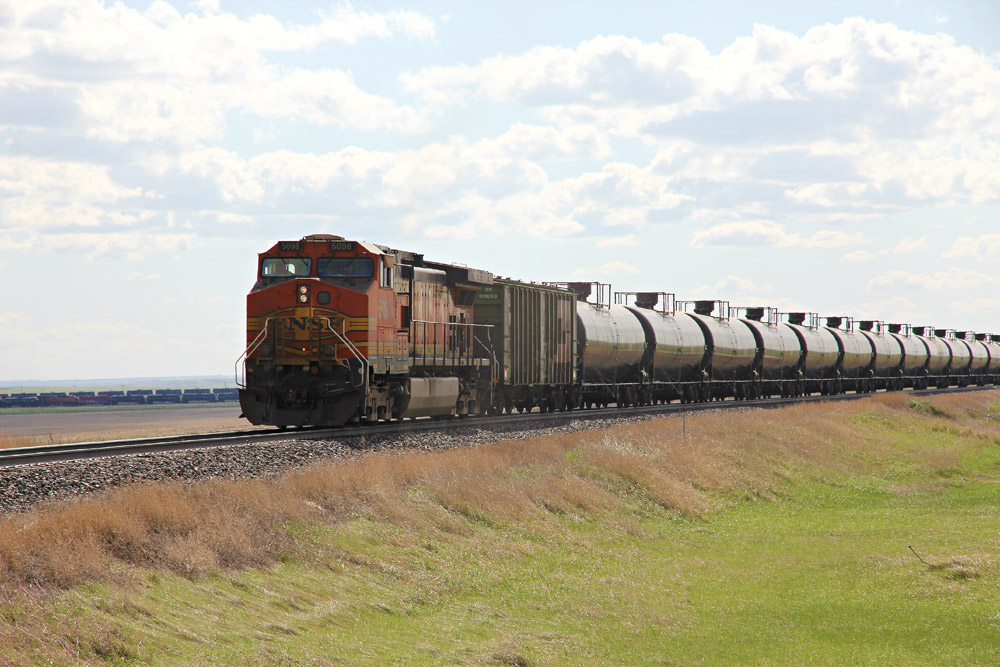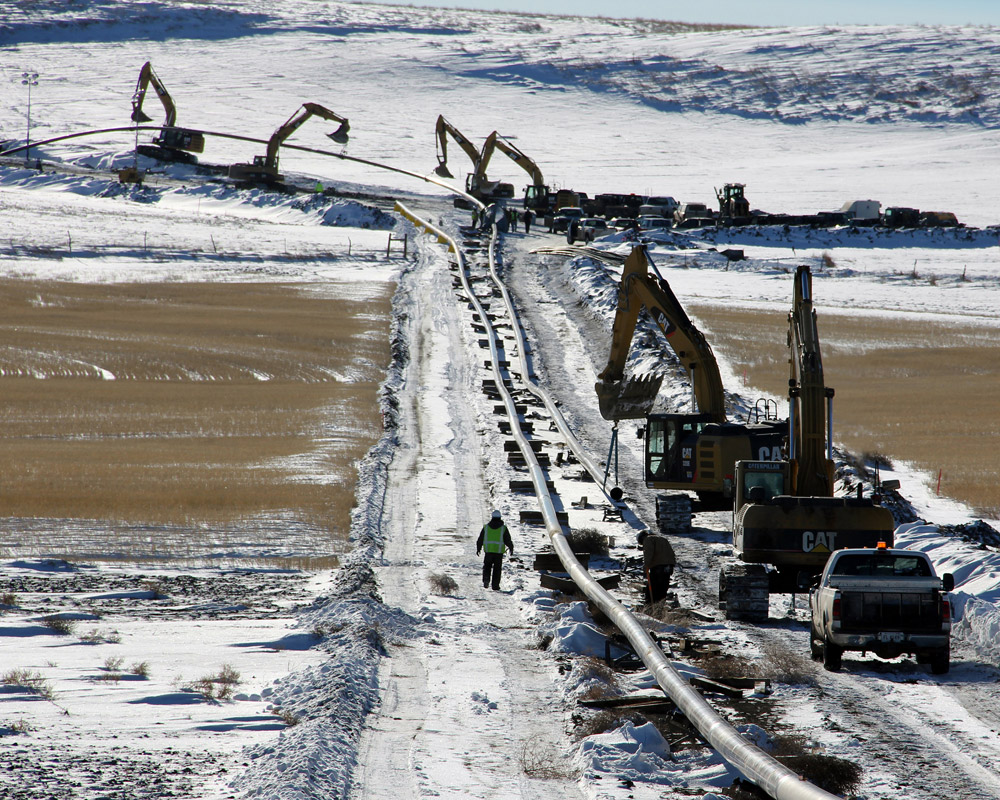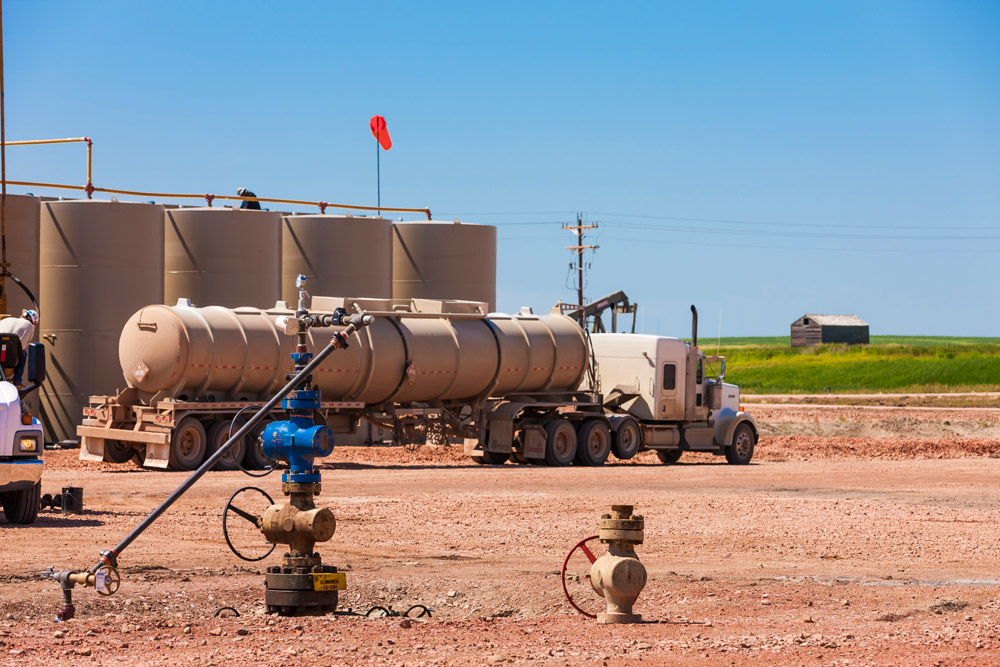Transporting and processing petroleum and natural gas:
- When oil is removed from underground, natural gas also comes to the surface.
- Some of the natural gas is used to operate equipment at the well site, but most of the natural gas is transported to processing plants where the natural gas is cleaned and separated into usable products, like propane for a grill or methane for heating a house.
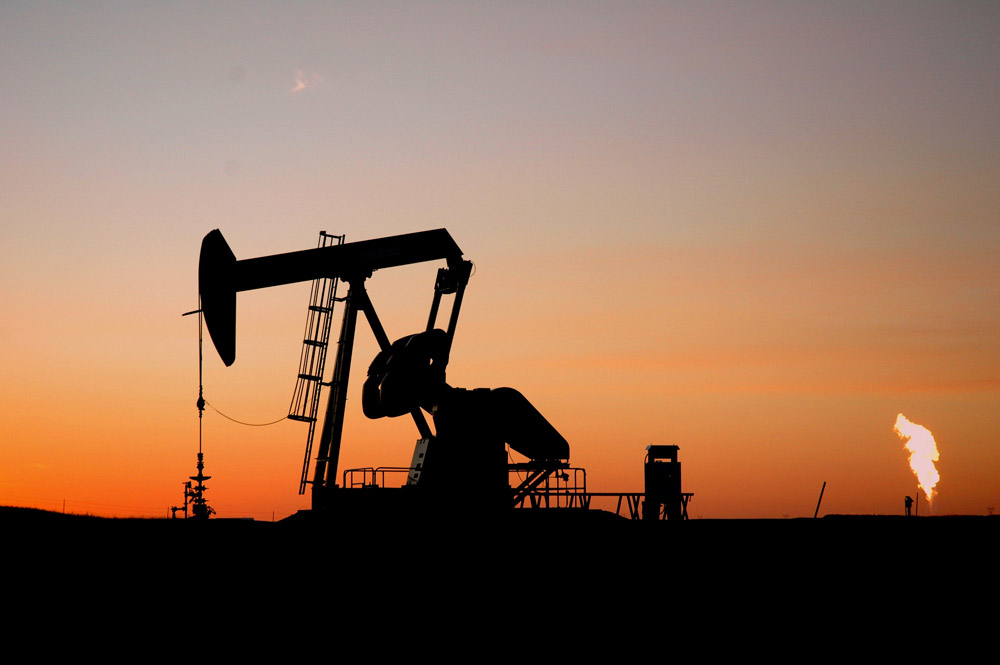
Pump and flare: A pumpjack and a flare at night in North Dakota. Photo courtesy of MBI Energy Services.
- A shortage of pipelines makes it impossible to transport all of the natural gas from the wells in North Dakota.
- The extra gas that cannot be used at the well site or shipped elsewhere is flared, or burned, at the well site.
- In 2011 36% percent of the natural gas from North Dakota wells was flared.
- By 2022 the number of well being flared has been reduced to 6%.
- North Dakota has 18 major petroleum pipelines and 9 major natural gas pipelines. There are approximately 30,000 miles of pipeline in North Dakota, enough pipe to cross the state 88 times.
- The extra gas that cannot be used at the well site or shipped elsewhere is flared, or burned, at the well site.
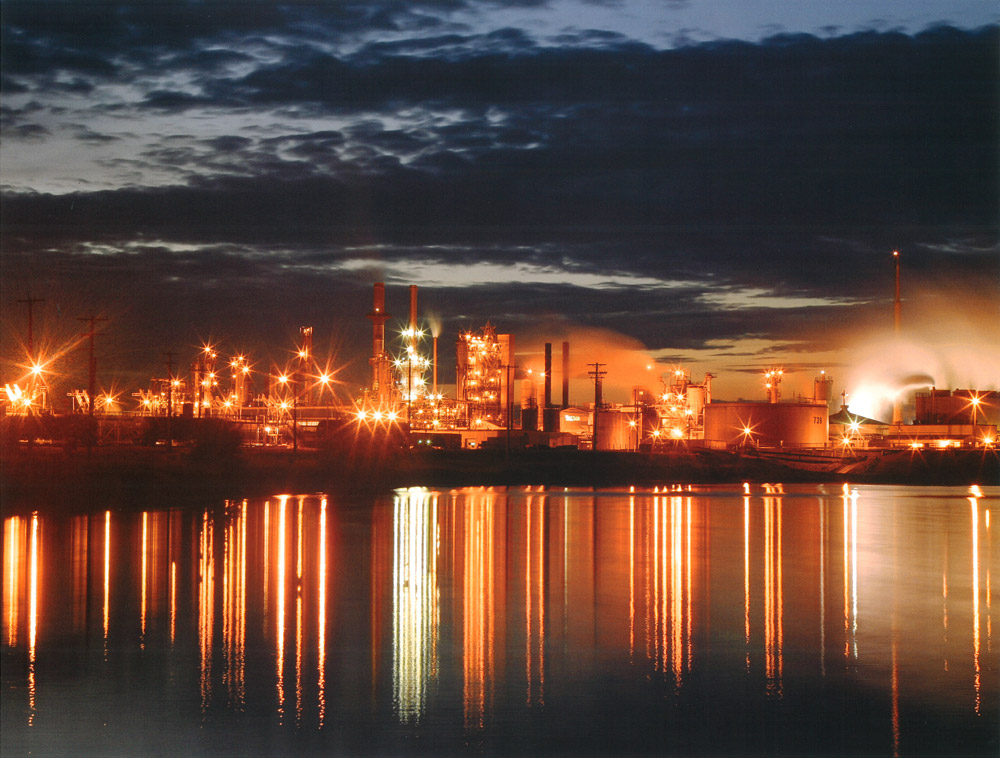
Mandan Refinery:Marathon Petroleum processes North Dakota petroleum into gasoline, diesel fuel, jet fuel, heavy fuel oils, and liquefied petroleum gas and transports them by truck, railroad, and pipeline to North Dakota and Minnesota.Photo courtesy of Tesoro.
- Petroleum that is shipped to an oil refinery is heated and separated into gasoline, diesel fuel, jet fuel, propane and other products.
- North Dakota has one oil refinery in Mandan owned by Marathon.
- At a natural gas processing plant, natural gas is cleaned and impurities separated out.
- North Dakota has more than 33 natural gas processing plants.
- They are located in the western part of the state in the following counties: Billings, Bowman, Burke, Divide, Dunn, Golden Valley, McKenzie, Mountrail, Slope, Stark, and Williams.
- Major uses of natural gas include fuel for heating and cooling homes and businesses, cooking, and generating electric power.
- North Dakota has more than 33 natural gas processing plants.
- Natural gas is the cleanest burning fossil fuel.
- In order to help reduce pollution, some companies have developed cars, trucks, and buses that can be powered by natural gas.



